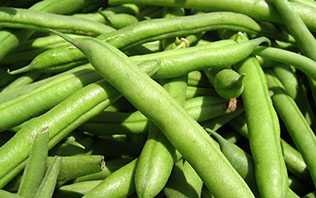
The Sunday Mail

Andrew Mangwarara —
PHASEOLUS vulgaris is the botanical name for the common beans loved by many, both as a green vegetable or in its mature dried form. Beans as we know them originated from the Americas and have been bred into many cultivars (at least 40 000 are known) the world over.
They are one of the longest cultivated crops. We have what we term dwarf or bush beans and runner or pole beans. We will not talk about the other species here, otherwise we will take the whole day doing so. During school days, we dreaded dinner time because we knew it was time for beans.
Little did we know the nutritional value of the meal.
Beans are high in fibre, protein, B vitamins, folate, iron and carbohydrates. Their health benefits include balancing the supply of glucose to diabetic patients, they make you less susceptible to hunger, they help fight cancer and heart disease.
However, for some people beans can cause gas, trigger gout, raise blood pressure, inhibit vitamin absorption and cause migraines. This vegetable is a warm season crop, which will grow optimally around the temperature range of 16 to 21 degrees Celsious.
When temperature is above 35 degrees Celsious, flower dropping will occur, resulting in poor yields. If night temperatures drop below 5 degrees Celsious during pod formation, the pods will be hollow or short if seeds have already developed.
The plant does not like water logged situations, which can result in flower and pod droppings. Wet conditions can also result in disease outbreaks. Sow beans early September to March if your altitude is around 750 to 1200m and if below 750m, sow from March, April and May.
The optimum soil pH is 5 to 5,5 and beans tolerate a wide range of soils. Avoid soils that caps as they impede germination. Also avoid those that are water logged.
Even though the plant is a legume, it will respond to fertilizing, but excessive nitrogen will be detrimental to pod production. As a general guide apply compound D at a rate of 350-600kg per hectare as a basal dressing, which can translate to 37g per square metre.
Top dress at pod setting if the crop is pail green with Ammonium nitrate, 10g per square metre (100kg per hectare). Plant spacing should be 5cm in-row and 45cm interow, but can be increased for mechanised operations to 20cm in-row and 70cm interow.
Do not plant seed that is more than three years old. Depth of planting is 25mm. Seed dressing with thiram is always recommended to prevent fungal infections.
Weed control must commence after germination. Water your bean crop regularly to get a good yield as poor water supply will greatly reduce yield. Ensure that leaves are dry before nightfall after a watering regime.
Harvesting of green beans can commence after 50 days from day of planting and continues for 21 to 30 days thrice a week. Green beans can be stored for a week before quality begins to decline. For dry beans, harvest them before they start splitting and scattering the seeds.
Some good cultivars for bush beans are contender, top crop, Canadian wonder and seminole. Common pests are aphids, which can be controlled with a systemic pesticide.
Problematic diseases include anthrancnose, bacterial blight and rust, which can be managed by early sprays if wet conditions persist. By planting a small amount of seed regularly, you keep your supplies constant.
One of life’s greatest treats is cooked beans. Enjoy!
Feedback: [email protected]



